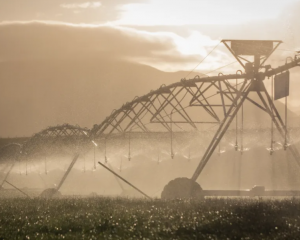
Speaking at a workshop hosted by Beef + Lamb New Zealand at the Oamaru Opera House on Thursday, Exigent Risk Management specialist Mike Johnston told participants it was more important to have a ''functional, usable'' system, ''not a wad of documents''.
Teaching farmers how to streamline the process of complying with the Health and Safety at Work Act was an ongoing commitment from BLNZ, which works with Exigent and WorkSafe NZ. Mr Johnston said this was the 38th presentation he had made from Geraldine south.
BLNZ has a new Farm Safety section on its website, containing downloadable forms farmers could use as templates. It would be updated as needed, when the Act was amended after input from WorkSafe, Mr Johnston said.
It also recorded ''lessons learned'', to help avoid making others' mistakes.
All people working on a farm have safety responsibilities. They could no longer rest entirely with the landowner, Mr Johnston said. If the owner educated the staff and provided training and resources to meet the farm's safety policies, an individual who did not comply was held accountable.
Safety now included prevention of illness from the likes of long-term exposure to noise, chemicals, and dust.
''Make sure you go through the process with everyone, even if they're a contractor or a sub-contractor. If you want something done a certain way, the responsibility is on you.
''A lot of risk comes down to communication - how you justify what you want done.''
It also involved listening to others' views ensuring tasks were done safely, whichever method was chosen.
''Being a good boss is not being dictatorial, but being a good communicator.
''One of the best things you can do is lead by example. Be a good leader.''
Farmers should keep simple records of all safety activities on the property, such as when staff were informed of safety matters, when maintenance was carried out on equipment and vehicles, and when contractors were present.
It was important to bear in mind that risks on farms could change according to circumstances including weather, the time of year, and the presence of livestock.
Farmers should assess the likelihood of the risk causing harm, and devise ways of avoiding or minimising the risk. A risk register should be kept for high-risk areas.
Safe Work Procedures (SWPs) have been written up for farmers to use. Mr Johnston advised photocopying and laminating them and keeping a copy in the workplace where staff could refer to them on the job.
New SWPs were being added, and farmers were free to develop their own, he said.
The farm's safety plan should be reviewed and improved regularly; Mr Johnston recommended once a year. It might only take a few minutes to sit down and see what needed to be updated and what had become obsolete - a new tractor could put an end to the safety procedures used for the old one, or a new agrichemical could have a different set of handling protocols.
Amendments could be initialled and the date noted.
''Even if nothing's changed, it's worth going through,'' Mr Johnston said.














